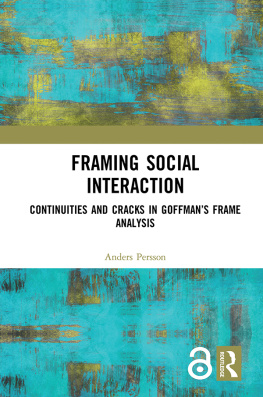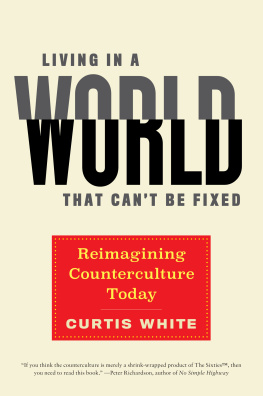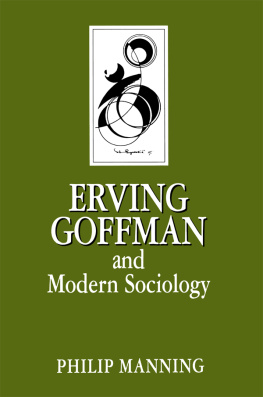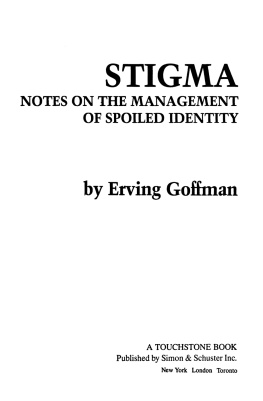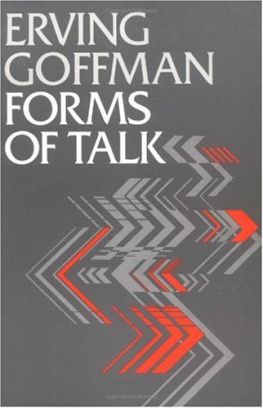Ken Goffman - Counterculture Through the Ages
Here you can read online Ken Goffman - Counterculture Through the Ages full text of the book (entire story) in english for free. Download pdf and epub, get meaning, cover and reviews about this ebook. year: 2007, publisher: Random House Publishing Group, genre: Religion. Description of the work, (preface) as well as reviews are available. Best literature library LitArk.com created for fans of good reading and offers a wide selection of genres:
Romance novel
Science fiction
Adventure
Detective
Science
History
Home and family
Prose
Art
Politics
Computer
Non-fiction
Religion
Business
Children
Humor
Choose a favorite category and find really read worthwhile books. Enjoy immersion in the world of imagination, feel the emotions of the characters or learn something new for yourself, make an fascinating discovery.

- Book:Counterculture Through the Ages
- Author:
- Publisher:Random House Publishing Group
- Genre:
- Year:2007
- Rating:3 / 5
- Favourites:Add to favourites
- Your mark:
- 60
- 1
- 2
- 3
- 4
- 5
Counterculture Through the Ages: summary, description and annotation
We offer to read an annotation, description, summary or preface (depends on what the author of the book "Counterculture Through the Ages" wrote himself). If you haven't found the necessary information about the book — write in the comments, we will try to find it.
Counterculture Through the Ages — read online for free the complete book (whole text) full work
Below is the text of the book, divided by pages. System saving the place of the last page read, allows you to conveniently read the book "Counterculture Through the Ages" online for free, without having to search again every time where you left off. Put a bookmark, and you can go to the page where you finished reading at any time.
Font size:
Interval:
Bookmark:


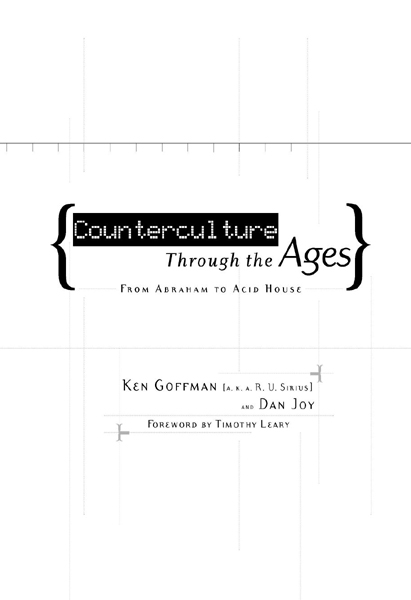
Table of Contents
FROM KEN:
To my fiance, Eve Berni,
without whom the sun would go out.
To the late Rosemary Woodru f Leary,
who helped make this possible.
To my departed father and very-much-alive mother,
Arnold and Roberta: freethinkers.
To St. Jude, my brilliant, funny writing partner on so many
projectsRIP.
FROM DAN:
To Cate Leggett and Randi Mates, who helped me;
and to Timothy Leary, who showed me.
This book could not have happened if not for the late
Kathy Acker; James Fasci; Douglas Go fman; Harriett Joy;
David Latimer; our wonderfully supportive editor, Bruce Tracy;
and our agent extraordinare, Laurie Fox.
ASSISTANT DEVELOPER:
Leon Fernandez
WRITING ASSISTANCE:
Gracie and Zarkov
Additional thanks to: Lenny Bailes, Ben Ballard, John Perry
Barlow, Claire Burch, the Linda Chester Literary Agency,
Michael Coblentz, Helen Donlon, Benjamin Feen, Steve Follmer,
Norman Girardot, Evan Gourvitz, Peter Hudson, Jason Keehn,
Alison Kennedy, Beth Kennedy, Phil Leggiere, Linda Lowrance,
Sharon Martin, Walter Miles, Jay Schwartz, Dan Sieradski,
Jeremy Tarcher, and Peter Lamborn Wilson.
DIS/ORIENTATION
First of all, thanks to Timothy and Dan for those too-damned-optimistic introductions. Like the proverbial fool in many countercultural tales of yore, I have charged headlong into the onrushing chaotic stream of human history armed only with your beautiful visions and maps.
Yes, I set out to knit a lovely symmetrical quilt from the many-colored yarn of these widely varying cultural epochs, hoping finally then to find a shapely finished object whose coherence would be clear to even the meanest intelligence.
But goddamn it, people are funnyand I mean unintentionally as well. Oh my maties, the things I found still make me shudder in awe. Great people, smart people, hip people, wildly creative people, flagrantly engaged not only in transformative works but in extravagant folly and contradiction; leaving behind them not just a legacy of spirited runs at authentic countercultural autonomy, but a plethora of unanswered questions. By the god(s), be they dead or alive, they were all humanall too human. And would we have it any other way?
And as for you, dear reader? I can only humbly request that, as you enter this historical narrative, you leave your expectations at the door. You can pick them up unaffected, if you wish, at the end of the trip.
There are many types waiting on line here, and I believe that you will all find many things inside worthy of your interest and attention. But hear me out: as I was writing this over the past two years, I told any number of people the title. As often as not, someone would tell me excitedly about some really obscure, eXXXtreme subculture, usually involving the word tantric. Among the charms ascribed to these cultures was the fact that they did things like eat brains, or bite the heads off bats and drink their blood. (Insert cheap Ozzy joke here.)
This is not a friggin freak show, people! While a book about such cultural phenomena does hold a profound fascination for this author (no, Im not being ironic), this particular work is about cultures whose impact has been more widely distributed. And this point goes also to the style and intent of this book. Sure, I want the hippest of the hipstersyou know, the ones with pictures of Antonin Artaud and Lynette Squeaky Fromme on their computer monitorsto find value in this book. But my most treasured hope is that it speaks to ordinary people who have been influenced or impacted by the counterculture; that it holds some interest for those who argue against counterculture; and finally that it is accessible to the curious, who may not even know what the word represents.
In doing this, I have mostly resisted an urge to engage in the sort of scholarly inquisitions, so popular over the last few decades, that put into doubt our common understandings of certain words that I use frequently in this text, such as individuality and liberty. I dont necessarily reject the value of those discourses, but Ive deigned them at least impractical for this disquisition. So if your idea of the Fab Four is Foucault, Deleuze, Derrida, and Lacan, you may find these proceedings a bit jejune.
Okay, now that some of my readers hipster expectations have been appropriately muted, we can proceed. Welcome to the first-ever history of countercultures.
Dan Joy came up with the idea for this book in 1994 in the course of conversations with Timothy Leary, whose later work in particular provided inspiration for key ideas. Dan developed most of the outline and conceptual foundations for this book and contributed about two chapters as well as other crucial prose passages to the final work. Leon Fernandez provided invaluable input on the outline, selection of countercultures, and basic ideas. I also contributed to the outline and articulation of key concepts, taking over full responsibility for the project in 2001 when it was contracted with the publisher. Gracie and Zarkov contributed a few lines and paragraphs to Chapter 1 and Chapter 8, and Dan rejoined the project for the final round of editorial work. Im responsible for a large majority of the writing and the specific perspectives expressed therein.
So: when the first-person pronoun I is used, it refers to me (R.U. Sirius), and when we is used, it refers to Joy and myself. Also, when it comes to gender pronouns like his or her, I like to just mix them up. Sometimes Ill refer to the generic person in the masculine and sometimes in the feminine. Get over it.
KEN GOFFMAN A.K.A. R. U. SIRIUS
6/23/2003
FOREWORD
Timothy Leary
Note: This foreword is not a message from beyond the grave, but rather one ofTimothy Learys last pieces of writing, composed when work on the conceptionof this book first began.
Counterculture blooms wherever and whenever a few members of a society choose lifestyles, artistic expressions, and ways of thinking and being that wholeheartedly embrace the ancient axiom that the only true constant is change itself. The mark of counterculture is not a particular social form or structure, but rather the evanescence of forms and structures, the dazzling rapidity and flexibility with which they appear, mutate, and morph into one another and disappear.
Counterculture is the moving crest of a wave, a zone of uncertainty where culture goes quantum. To borrow the language of Nobel Prize winning physicist Ilya Prigogine, counterculture is the cultural equivalent of the third thermodynamic state, the nonlinear region where equilibrium and symmetry have given way to a complexity so intense as to appear to the eye as chaos.
Participants in a counterculture thrive in this zone of turbulence. It is their native medium, the only clay malleable enough to be shaped and reshaped fast enough to keep pace with the flashing of their inner visions. They are adepts of flux, chaos engineers, migrating in step with the ever-traveling wavefront of maximum change.
Next pageFont size:
Interval:
Bookmark:
Similar books «Counterculture Through the Ages»
Look at similar books to Counterculture Through the Ages. We have selected literature similar in name and meaning in the hope of providing readers with more options to find new, interesting, not yet read works.
Discussion, reviews of the book Counterculture Through the Ages and just readers' own opinions. Leave your comments, write what you think about the work, its meaning or the main characters. Specify what exactly you liked and what you didn't like, and why you think so.


